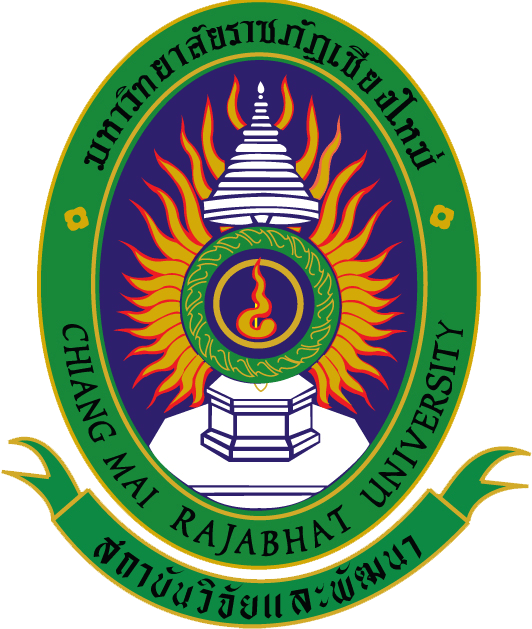
ระบบสารสนเทศงานวิจัย สถาบันวิจัยและพัฒนา มหาวิทยาลัยราชภัฏเชียงใหม่
Research Information System(RIS)
โครงการเสริมสร้างมูลค่าของน้ำมันหอมระเหยจากพืชสมุนไพรท้องถิ่นสู่มาตรฐานผลิตภัณฑ์ชุมชนในชุมชนพื้นที่สะลวง อำเภอแม่ริม จังหวัดเชียงใหม่
อาจารย์สุกิจ ทองแบน
คณะวิทยาศาสตร์และเทคโนโลยี
คำสำคัญ :
เลขทะเบียน :
605-58-SCI-RSPG
บทคัดย่อ
โครงการวิจัยนี้ได้ศึกษาพืชสมุนไพรที่มีในพื้นที่ชุมชนสะลวง อำเภอแม่ริม จังหวัดเชียงใหม่ ในพื้นที่นี้พบพืชมีจำนวน 75 ชนิด ที่นำมาเป็นยาสมุนไพร ซึ่งจากข้อมูลสรรพคุณทางยาและพืชที่พบได้ทั่วไป คือ ต้นเข้าพรรษา (Globba winitii C.H. Wright) และว่านแผ่นดินเย็น (Kaempferia galanga Linn) ได้ศึกษาสารองค์ประกอบทางเคมี (พฤกษเคมีเบื้องต้น) พบสารประกอบฟีนอลิก สารแทนนิน น้ำมันหอมระเหย และสารต้านอนุมูลอิสระ และสารสกัดที่ได้จากการกลั่นด้วยไอน้ำเป็นน้ำมันหอมระเหยสีเหลือง มีร้อยละผลิตภัณฑ์ของการสกัดน้ำมันหอมระเหยเท่ากับ 0.0134 % (w/w) และ 0.1024 % (w/w) ตามลำดับ ซึ่งเมื่อนำไปทดสอบด้วย Paper Screening for DPPH Radical Scavenger พบเกิดการฟอกจางสีของ DPPH จึงเป็นการทดสอบสารต้านอนุมูลอิสระเบื้องต้น เมื่อทดสอบฤทธิ์การต้านอนุมูลอิสระด้วยวิธี DPPH พบว่ามีฤทธิ์ต้านอนุมูลอิสระด้วยค่า IC50 เท่ากับ 37,613 และ 95,620.17 ppm ตามลำดับจากการทดสอบผลของน้ำมันหอมระเหยต่อการยับยั้งการเจริญเชื้อแบคทีเรียก่อโรคบางชนิด พบว่าน้ำมันหอมระเหยว่านเข้าพรรษาสามารถยับยั้งเชื้อแบคทีเรีย Staphylococcus aureus, Proteus mirabilis และ Micrococcus luteus และน้ำมันหอมระเหยว่านแผ่นดินเย็นสามารถยับยั้งเชื้อแบคทีเรีย S. aureus และ M. luteus สำหรับการทดสอบหาค่าความเข้มข้นต่ำสุดของน้ำมันหอมระเหยที่สามารถยับยั้งเชื้อแบคทีเรียก่อโรคบางชนิด พบว่าน้ำมันหอมระเหย ว่านเข้าพรรษามีค่าความเข้มข้นต่ำสุดที่สามารถยับยั้งเชื้อแบคทีเรีย P. mirabilis และ S. aureus เท่ากับ 25 % (v/v) และน้ำมันหอมระเหยว่านแผ่นดินเย็นได้ค่าความเข้มข้นต่ำสุดที่สามารถยับยั้งเชื้อแบคทีเรีย S. aureus และ M. luteus เท่ากัน คือ 50 % (v/v) จากการทำผลิตภัณฑ์แชมพูที่ผสมน้ำมันหอมระเหยแผ่นดินเย็น แล้วทำแบบประเมินความพึงพอใจแชมพูจากผู้ทดสอบ พบว่า ความพึงพอใจด้านสี และกลิ่นของแชมพูอยู่ในระดับดีมาก และดี ส่วนความพึงพอใจด้านการใช้งานของแชมพูอยู่ในระดับดีมาก
Abstract
The aim of study were survey and collected wisdom knowledge of using medicinal plants from community in Saluang areas, Mae Rim district, Chiang Mai province and developed the products from local medicinal plants. From the results, seventy-five medicinal plants were used by local people in the study areas. Two medicinal plant species, Kao Pun Sa or Hong hern (Globba schomburgkii Hook.f.) and Pan Din Yen or Prao Hom (Kaempferia galanga Linn.) were analyzed for chemical and bioactive compounds properties; phenolic compounds, tannins, essential oils, antioxidants properties. The plant essential oils were obtain by stream distillation method. The percentage yields of yellow essential oils of two species were 0.0134 and 0.1024 % (w/w), respectively. The Paper Screening for DPPH Radical Scavenger test for antioxidant properties was confirmed by the colorless of DPPH. The DPPH assay results, the free radicals inhibition properties (IC50) were 37,613 and 95,620.17 ppm. The antibacterial properties results, the essential oil of Globba inhibited growth of Staphylococcus aureus, Proteus mirabilis and Micrococcus luteus while Kaempferia’s essential oil inhibited to S. aureus and M. luteus. For the minimum inhibitory concentration (MIC) results were 25% (v/v) in P. mirabilis and S. aureus results for Globba’s essential oils and Kaempferia’s essential oils results was 50% (v/v) in S. aureus and M. luteus inhibition results. The products satisfaction results indicated that color and using properties were very good while the smell of the product was good quality.
ไฟล์งานวิจัย
อยู่ในระหว่างการปรับปรุงเนื้อหา463 16 มี.ค. 2561
โครงการอนุรักษ์พันธุกรรมพืช (อพ.สธ.)
สำนักงานโครงการอนุรักษ์พันธุกรรมพืชอันเนื่องมาจากพระราชดำริ สมเด็จพระเทพรัตนราชสุดาฯ สยามบรมราชกุมารี สวนจิตรลดา ถ.ราชวิถี เขตดุสิต กรุงเทพฯ ๑๐๓๐๓
0-2282-1850
admin@plantgenetics-rspg.org